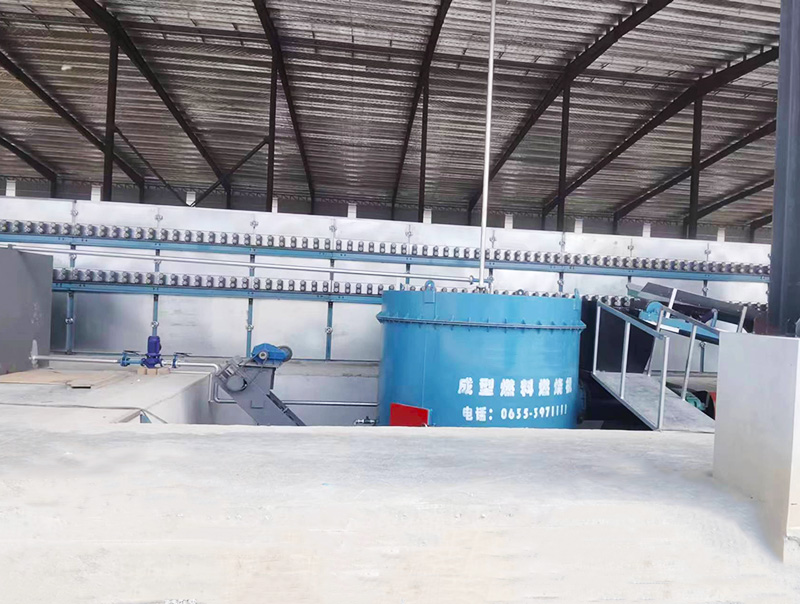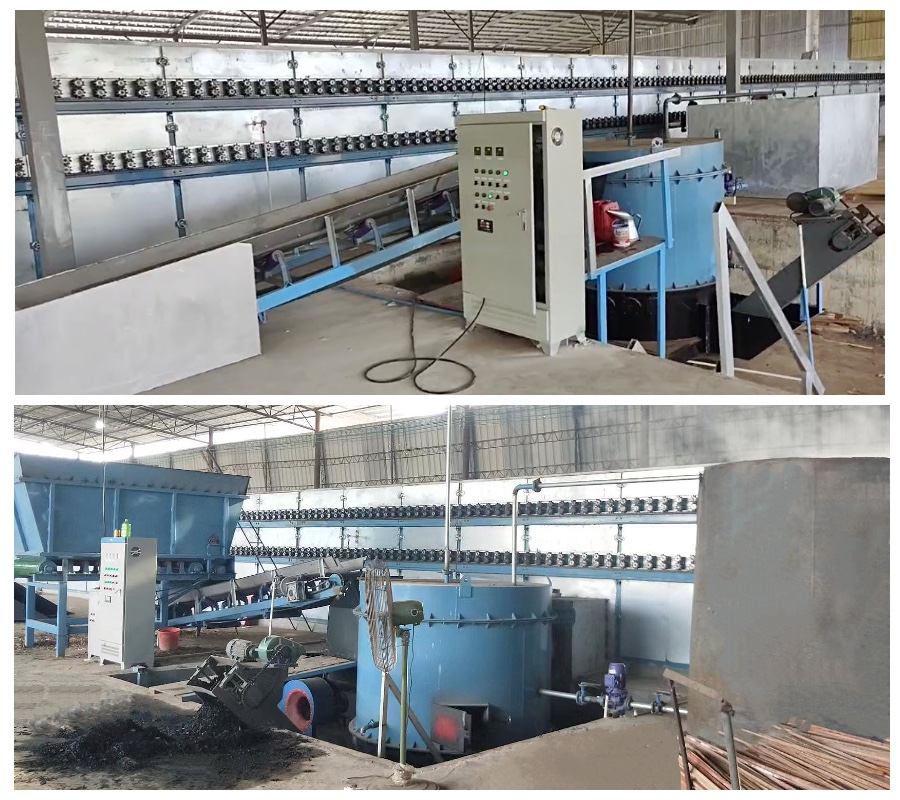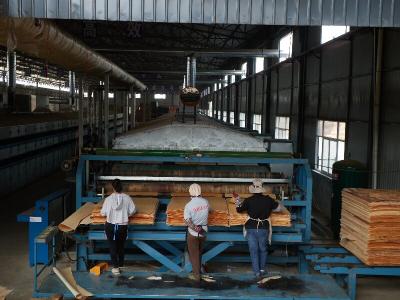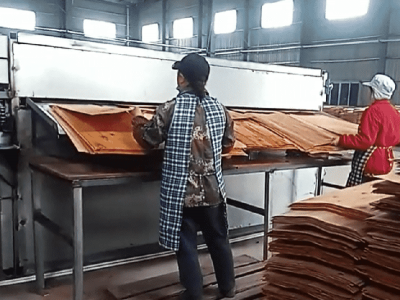2 deck veneer dryer is in operation in Malaysia
Project Background: Addressing Rubber Wood Drying Challenges
Rubber wood, a cornerstone of Malaysia’s timber industry, is prized for its versatility in furniture, flooring, and construction. However, drying this species efficiently has long posed challenges: its high moisture content (often exceeding 60% post-cutting) requires precise control to prevent warping, cracking, or uneven shrinkage. Traditional drying methods, reliant on conventional dryers with inconsistent heat distribution, often resulted in subpar veneer quality, driving up rejection rates and production costs.
Against this backdrop, the client turned to our company’s 2-deck roller veneer dryer, a solution tailored to overcome these hurdles. The machine’s integration of biomass burner technology—harnessing local agricultural and wood waste as fuel—aligns with Malaysia’s sustainability goals while cutting energy expenses. Today, after weeks of installation and calibration, the dryer is running smoothly, processing rubber wood veneers at a steady clip and delivering results that exceed expectations.

Key Technical Innovations Driving Superior Performance
What sets this dryer apart is its fusion of smart engineering and user-centric design, addressing critical pain points in veneer production:
1. Axial Flow Fans: Reducing Power Consumption Without Compromise
A standout feature is the adoption of new-generation axial flow fans, replacing older centrifugal models. These fans are engineered to move larger volumes of air with significantly less energy, slashing power consumption by an estimated 25–30% compared to traditional systems. “The reduction in electricity use is immediate and noticeable,” noted the client’s production manager, Mr. Raj. “Over a month, we’re saving thousands in utility bills—funds we can reinvest in expanding our operations.” Beyond cost savings, the axial fans operate quietly, improving workshop conditions for staff.
2. Stepwise Heat Exchanger Design: Ensuring Uniform Heat Distribution
At the core of the dryer’s efficiency lies its stepwise heat exchanger system, where each section features uniquely sized and configured components. This modular design allows for targeted heat adjustment across the dryer’s length:
Section 1 (Initial Drying) : Larger heat exchanger plates deliver high-velocity hot air to rapidly reduce surface moisture without scorching the veneer.
Section 2 (Intermediate Drying) : Smaller, densely packed plates slow airflow to allow deep, even penetration of moisture from the veneer’s core.
Section 3 (Final Curing) : Precision-engineered fins maintain stable temperatures, ensuring the veneer reaches its target moisture content (8–10%) with zero over-drying.
This layered approach guarantees that hot air is uniformly distributed across both decks, eliminating “hot spots” or underheated zones. The result? Every veneer sheet emerges with consistent quality, regardless of its position in the dryer.
Exceptional Drying Outcomes: Quality That Elevates Downstream Production
The true test of any dryer lies in the quality of its output—and this machine is passing with flying colors. For the Malaysian client, drying rubber wood veneers to meet international furniture manufacturers’ standards was non-negotiable. Here’s how the dryer delivers:
Uniform Moisture Content: Thanks to the stepwise heat exchanger and controlled airflow, veneers exit the dryer with moisture levels varying by less than 1.5% across the batch. This consistency eliminates issues like glue failure in downstream lamination or pressing processes.
Flawless Surface Finish: Veneers are smooth, flat, and free of wrinkles, end waves, or cracks—critical for high-end furniture where aesthetics matter. “Previously, we’d reject 8–10% of veneers due to cosmetic defects,” Mr. Raj added. “Now, rejection rates are below 2%.”
Strong Surface Bonding: The dryer’s gentle yet thorough drying process preserves the veneer’s natural fibers, ensuring the surface remains receptive to adhesives. This has led to a 15% improvement in bond strength for the client’s final products.
 Sustainability Meets Profitability: A Model for the Region
Sustainability Meets Profitability: A Model for the Region
Beyond technical excellence, the dryer embodies a commitment to sustainability. By using a biomass burner fueled by wood waste—such as sawdust and trimmings from nearby mills—the client has cut reliance on fossil fuels by 40%. This not only lowers operational costs but also positions the company as a leader in eco-friendly manufacturing, appealing to environmentally conscious buyers in Europe and North America.
“The success of this installation sends a strong message,” said a spokesperson from our company. “It proves that advanced drying technology, when paired with local resources and smart engineering, can transform a business—boosting quality, reducing waste, and driving growth.”
Invitation to Witness Excellence
As the dryer continues to set new benchmarks in rubber wood veneer production, the client and our team invite interested parties—timber processors, equipment buyers, and industry consultants—to visit the site. Witness firsthand how this 2-deck roller veneer dryer with biomass burner delivers unmatched efficiency, quality, and sustainability.
For Malaysia’s wood processing industry, this machine is more than an upgrade—it’s a leap forward. And for those seeking to future-proof their operations, it offers a blueprint for success in an increasingly competitive global market.
Don’t miss the chance to see innovation in action. Contact us today to schedule your visit!





